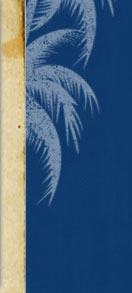      
  
  
|
|
|
|
|
|
|
|
INDIAN KEY by Irving R Eyster & Robert I Eyster
|
| |
| Indian Key, though a small island, has a rich and exciting history inclusive of Indians, Spanish Conquistadors, pirates, wreckers, politicians, ship builders, and the U.S. Navy.
Indian Key gained prominence as a wrecking village from which ships sailed to salvage the many shipwrecks on the treacherous reef just off shore. This was the domain of Jacob Housman, who was known as the most notorious wrecker in Florida.
This island paradise was also the locale of the first resort in South Florida. Once ashore, one could find a hotel, bowling alley, bar, general store, post office, blacksmith and carpentry shop, as well as warehouses for salvaged goods. The island transformed into the busiest port between St. Augustine and Key West.
Dr. Henry Perrine of Indian Key, a botanist introduced many of the trees and plants to this area that still exist today.
Indian Key became the first County Seat of Dade County (now Miami-Dade County) before Miami existed, and it remained a major part of South Florida history, extending beyond the Indian Key Massacre and the burning of the village. Indian Key was a village before Key West and was the home of the first Masonic Lodge in Florida.
Indian Key, located at Mile Marker 78 on the Overseas Highway in the Florida Keys, still has many stories to tell through the remains of structures which were part of this once thriving island community.
|
| $15.95 |
|
|
| |
| |
|
|
|
|
| |
| Qty:
|
| |

|
| |

|
| |
| |
|
|
|
|
|